Business
Fiat vs bitcoin and Africa’s plan to de-dollarize
Published
3 years agoon
By
Olu Emmanuel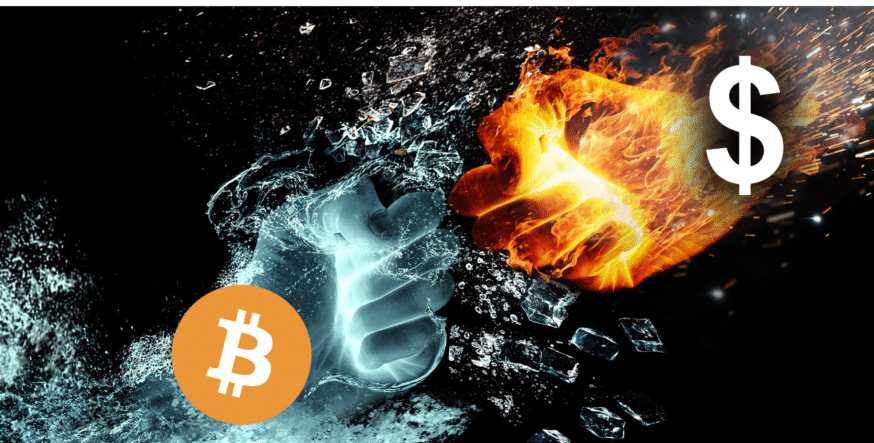
I’d start off this article with 3 main subject matters in order of their relevance and importance to the topic;
- Blockchain Technology and how it concerns Africa
- Cryptocurrencies
- Money
But for the sake of clarity and understanding, I’d start with Money which most people are familiar with, and then move to cryptocurrencies which only a few people understand, and then explain how Blockchain Technology and Bitcoin work which only a “few of a few” people understand, then leave a question by Kosemani to Madam Oby Ezekwesili on “What is Africa’s plan to De-Dollarize”?.
The end of this article requires your response if you choose to give it.
Note: Please pay attention to the hyperlinks I leave, I wouldn’t tell you outrightly to click them, because “nor be me go tell you wetin you go do”.
PS to my Non-Nigerian readers: the “nor be you go tell me wetin I go do is a popular phrase in Nigeria” basically just means, “Don’t tell me what to do”!
MONEY
“EVERY NEW EVOLUTION OF MONEY HAS BEEN BACKED BY AN EVOLUTION IN TECHNOLOGY ‘S SOCIAL CONSTRUCT”
We most likely know the evolution of money, it’s taught in social studies in African primary schools; we hear about how we started with the barter system and then went on to use agro-nature-based money, like, cowries, stones, bones, rare clams, pearls, etc.
We grew from there to metal money, coins, money made out of metal, etc, and then “they say” we discovered minerals like gold and we used them as a store of value, created gold coins, and used them to back our paper money (which are basically promissory notes).
Actually, this is the history of money for the “West”. Forget it; it’s not how Africans began using money, we introduced the world to gold, you can’t talk about gold without talking about Egypt and the Egyptians sure weren’t white, but that’s a talk for another day.
Moving on…….
The internet made the creation of digital money and card-based money possible, and ultimately CryptoCurrencies.
One thing you’d notice is that with every evolution or upgrade of money, there was a technological or societal revolution.
Man’s first revolution was in agriculture, and so, agro-backed money was created and accepted, but as he began to discover metal and understand how to manipulate its structure, he started using metal-based money, discovering rare minerals like gold, silver, etc which sponsored the use of minerals as money.
As industrialization expounded and the service industry grew we saw growth in commerce, the need for commercial banks and central banks, and the need for a more unified system of exchange across countries, businesses, states, etc, which led to the use of paper money.
Paper money is actually promissory notes or IOU which states that any issuer holding it has a right to get the stated amount worth in Gold or any mineral backing it from the banks.
As the internet evolved we saw the creation of digital money, and an expanded and interconnected banking system on a global level.
SO WHO CONTROLS MONEY?
If you go to the streets and ask people these 3 key questions;
- What exactly is money and where does it come from?
- Who creates it?
- Who controls it?
You would get answers like, money is purchasing power, money comes from the government, is created by reserving gold and printing cash, the central banks create money, and the government controls the money through fiscal and monetary policies.
But these aren’t exactly correct according to today’s economic system, because money isn’t just currency.
DIGITAL MONEY: BANK DEPOSITS
I’d like to start with a referenced article from the Bank of England; Money Creation in the Modern Economy published in 2014.
We see that, contrary to what we were taught in school about how the banks are intermediaries between those who have a surplus (which funny enough are the individuals) and those who have less (the businesses), and how the banks collect deposits from the surplus and borrow it to the business owners to do business in the economy, multiply it and pay back interests, contrary to what we think;
- The governments don’t create money, the banks do.
- The banks create money by issuing loans and creating deposits rather than issuing loans from already existing deposits.
- Consequently, new money is created when loans are issued and money and profit are made when loans are paid back.
This also happens on a large scale with the Federal Reserve system of countries. Quoting The Boston Federal Reserve in 1984;
“WHEN YOU OR I WRITE A CHECK THERE MUST BE SUFFICIENT FUNDS IN OUR ACCOUNT TO COVER THE CHECK, BUT WHEN THE FEDERAL RESERVE WRITES A CHECK THERE IS NO BANK DEPOSIT ON WHICH THAT CHECK IS DRAWN. WHEN THE FEDERAL RESERVE WRITES A CHECK, IT IS CREATING MONEY”.
Here’s an illustration;
If Mr. A goes to the bank to ask for a loan of $100,000, he is not paid $100,000 cash, his balance is changed to $100,000 which isn’t backed by any new cash or any new gold deposited, the bank just “alters” his account balance to reflect how much he currently owes the bank.
An interest rate of say 10% means he’d pay back $110,000, here the banks create new money and earns an interest of 10% for doing so, money that otherwise didn’t exist before, they basically just printed money digitally.
Also, because our economy is digital, he can spend that deposit without having to ever withdraw cash, and so the cycle continues, when the money is paid back, you can technically say the bank made a profit of $110,000 and not necessarily $10,000.
This became even worse when the dollar stopped being backed by gold in 1971, it slowly became backed by crude, but even that we see is changing rapidly already, (if you’re paying attention to what Russia is doing).
In honesty, we don’t know how much currency is in circulation in the world, there’s no system to accurately check it, yet it seems like the debt keeps rising and countries are owing one another, and people are stuck in the rat race for currency.
DEBT MONEY CREATION SYSTEM: RESERVE RATIO
The Federal Reserve was created in 1931 which is a foundation for the American Central bank system and for fiat partially backed by gold.
Our monetary system is based on debt, the Central Banks can create money out of nothing but can buy real assets with it. The Central banks and the Government also make a profit from printing new money into the economy, that profit is called Seignorage.
This begs the question of why individuals should pay taxes when the Central Banks can apply a monetary policy called Quantitative Easing to print more money and bail out the banks during financial crises.
Here’s some insight as to how our banks work;
Commercial Banks around the world largely operate using the Fractional Reserve Lending policy or fractional reserve banking, this is a monetary policy that allows the bank to invest a certain percentage of deposits and hold a percentage in the bank for liquidity purposes, the percentage of deposit of that money that they must hold is called “Reserve Ratio, or Reserve Requirement”.
Some country’s fractional reserve ratio is 10%, and Nigeria’s cash reserve ratio is 27.50% (a banker can crosscheck and let me know if this is actually the case), this means for every N1M you deposit in the bank, the bank can invest N725,000 and only hold N275,000 in their deposit.
Your balance still shows the full amount but that’s because essentially it’s just numbers, a unit of account in their vault cash, that unit of account that is updated in your account is called a “Bank Credit”.
Now, these Bank Credit is still currency even if they exist in computers digitally; of all the types of money that exist, from M0-M3, M1-M3 exist as computer digits and make up 93%-97% of the money in our economy.
So essentially, your deposit of N1,000,000 created N1,725,000 in existence an additional N725,000 that exists just because someone made an entry in an accounting system and an initial deposit can create up to 10 times the value of that deposit in bank credit, and this is how the currency supply is increased and currency is created by the banks.
The problem with this is that when the bank borrows out that N725,000 to someone else to do business or buy something, that payment appears as a deposit again in another person’s account and the bank holds N199,375 and invests N525,635 which appears as a deposit again in another person’s account when the loan is used for payments and then the cycle continues.
So one deposit of N1,000,000 can be redeposited and relent to/by the banks in multiples of 6-7 times before it is exhausted using the fractional reserve lending system, that is 6-7 multiples of interest in different places, in different banks on this N1M deposit, there’s basically no tracking, records or verification system for the transfer of currency.
I call this the problem of double-spending, and later on, in another article, we’d take a look at how Blockchain Solves this problem.
PURCHASING POWER
Inflation, amongst other factors, is the rise in currency supply, and its consequence is the price increase of goods and services because there has to be a balance.
Inflation happens when the cost of purchase increases more than the income of individuals can rise to meet it.
For Example;
The rate of $1 to Naira 5 years ago was around N150 to a dollar, and 5 years ago you could buy a good car at N800,000. At the time of writing (May 5th, 2022), the rate is at $580 to a $1 and you can buy a good car at around N2,000,000, so even if you saved your currencies in $ and not in N, the cost of purchasing has also increased to meet your economic profits from saving in foreign currencies – ShoGet?
So the average man wants to multiply his money, more than inflation can meet with it, and more than the average purchasing power can increase to meet it.
So he looks at investment low risks low rewards or high-risk high rewards assets, investing in businesses, gold, land, or new assets to aid more wealth transfer of wealth because wealth isn’t destroyed, it’s just transferred. I’d say visit this link and watch but nor be me go tell you wetin you go do.
THE PROBLEM WITH OUR MONETARY SYSTEM
From a mathematical perspective, how do you solve an equation with no constants?
Our economic system is governed by 3 basic factors;
- Supply
- Demand
- Cost or Price
- And other variables like working population, the Nations’s natural resources, etc.
And they are all variables, for sake of simplicity I wouldn’t be writing any formula, none of these basic factors are a constant.
So, we say that supply is inversely proportional to demand and price, and that price is directly proportional to demand, so increased demand means increased price and increased demand means reduced supply, or else if they were to equal each other, we would have a perfect market, but there’s no such thing as a perfect market is there?
Or so we say.
Bitcoin changed these factors, Bitcoin made supply the constant, and every other factor remains a variable.
THE CONSTANT WE HAD TO BACK OUR MONEY WAS GOLD, BUT SINCE IT WAS TAKEN OFF THE DOLLAR IN 1971, OUR SUPPLY FACTOR BECAME A VARIABLE AND COULD CONTRACT AND EXPAND “AT WILL”, WHICH AFFECTED ITS MONEY FEATURES AND ITS ABILITY TO INCREASE IN VALUE OVER TIME.
KarlaGod
Essentially, cryptocurrencies have a fixed supply, the ones that don’t have a fixed supply like Ethereum and BNB, have a burn mechanism to reduce the supply of that crypto in circulation.
The price of Bitcoin is gotten by dividing the market capitalization by the number of Bitcoins in circulation. You can do this yourself in real time. At the time of writing this article on May 5th, 2022, the Bitcoin price is at $38,845.5, the market capitalization (which is how much money has gone into trading it) is at $757,656,288,039, and the number of Bitcoins in circulation is 19,014,843.
This data isn’t imputed by an algorithm stored in a centralized system, this information is gotten off the Bitcoin Blockchain which tracks every BTC transaction from the first block mined to date.
One of the differences between the Crypto Market and the stock or money market is that to manipulate the crypto market, you must put substantial money into it or take it away, and even that manipulation is short-lived, as opposed to the other market where you can just increase supply or use a proverbial pen to add or subtract figures.
CRYPTOCURRENCIES
Money and currency aren’t the same things, currency is a medium of exchange with all the features we were taught in school like being interchangeable, fungible, durable, portable, a unit of account, etc.
Money is all of these, plus a store of value, which means it should amass more value over time, so because our normal currencies are printable at will by our Central Banks we understand the value of money like Gold and Bitcoin have the true value of money possessing all the qualities of a currency and the ability to grow in value over time.
In a nutshell, all money is currency but not all currency is money.
THAT BEING SAID, THE ONLY CRYPTOCURRENCY THAT POSSESSES THE MONEY ATTRIBUTE, IS BITCOIN, ALL ALTCOINS ARE JUST CRYPTOCURRENCIES, THEY HAVE THEIR BOARD OF DIRECTORS AND MARKETING TEAM, BUT BITCOIN IS THE ONLY TRULY DECENTRALIZED DIGITAL MONEY.
KarlaGod
Governments don’t like gold because it imposes economic restraints, and consequently, they don’t like Bitcoin because they can’t control it, manipulate it or print more of it from thin air.
Bitcoin functions very differently from how fiat works, Bitcoin and most cryptocurrencies have a fixed supply, and there will only ever be 21 million Bitcoins, whereas our Fiat can be unlimitedly minted.
Bitcoin keeps supply static and the market activities make demand fluctuates which counts to the volatility in the price of Bitcoin and the increase in price over time as demand increases.
For example, the market capitalization divided by the total supply of BTC in circulation gives you the price of Bitcoin, the price of any cryptocurrency in the world is determined purely by the forces of supply and demand (not counting shortlived market manipulation).
I can’t talk about Cryptocurrencies without first talking about Bitcoin.
SO WHY BITCOIN?
To understand Bitcoin, we need to understand how gold works. To put it basically, gold is a scarce resource, getting it requires organized technical work, so you have miners and companies who invest resources into mining gold, refining it, and selling it, and because it doesn’t degrade or age over time, its value is intrinsic and sustainable making it a good base use for money.
Bitcoin works like this but in a digital structure, that structure is Blockchain Technology, you still have the miners, the process, and the mathematical and computational requirements which ensures technical and organized processes for getting BTC.
Bitcoin has grown from a P2P payment coin to a high-value asset, backed by Blockchain technology which is a distributed consensus network of millions of computers connected running the same ledger double-checking each other not run by a single entity, it is the reward for the miners on the Bitcoin Blockchain, just like gold has it’s supply and distribution chain, Bitcoin does too. You should check the Bitcoin Whitepaper.
Bitcoin forms the bases for which other cryptocurrencies are created based on cryptography, and I quote from its white paper:
“What is needed is an electronic payment system based on cryptographic proof instead of trust, allowing any two willing parties to transact directly with each other without the need for a trusted third party. Transactions that are computationally impractical to reverse would protect sellers from fraud, and routine escrow mechanisms could easily be implemented to protect buyers. In this paper, we propose a solution to the double-spending problem using a peer-to-peer distributed timestamp server to generate computational proof of the chronological order of transactions. The system is secure as long as honest nodes collectively control more CPU power than any cooperating group of attacker nodes”.
- It cannot be controlled by anyone because of its decentralized nature.
- Doesn’t have any CEOs, a board of directors, or a founder that we know.
- Didn’t have any marketing campaign, funded mostly by the community of strangers around the world he understood what it was and united because of it.
- You can only add to the network and cannot take from it.
- It has grown from $0.08 to at this time of writing (May 5th, 2022) $39,801 (let’s just imagine it didn’t hit $68,649) in 13 years, that’s 49,751,149.9% in contrast to Gold has grown 4509.8% in the last 53 years.
- Let’s also forget about Silk Road in this context because the dollar also went through that process too with the drug crises in the 1970s.
Bitcoin is like gold, it has all the qualities and features of money, in addition to being a currency it is actually money, the fiat that we have isn’t, they’re just currencies.
SO WHAT IS AFRICA DOING ABOUT THE BLOCKCHAIN TECHNOLOGY?
I’d start this section and end this article by asking a question that Oluwasegun Kosemani, CEO of Botmecash asked Mrs. Oby Ezekwesili, Nigeria’s former Minister for Education and Former Federal Minister of Solid Minerals Nigeria, also the founder of Fix Politics and SPPG (The School of Politics Policy and Governance).
He asked this question on a Twitter space anchored by Christine Mhundwa with Mrs. Oby Ezekwesili as Guest Speaker, hosted by Global Perspective initiatives.
WHAT IS AFRICA’S PLAN TO DE-DOLLARIZE?
Kosemani
“What is Africa’s plan to de-dollarize”?
Knowing all that we know about how currency works, inflation, and the dollar. Knowing what we know about how Bitcoin and Blockchain Technology, what is Africa’s plan to de-dollarize?
Our currencies are backed by a currency that is backed by nothing and has consistent rising inflation, plus it is heavily run by debt what are we doing about it?
Listen to the conversation between Kosemani and Madam Oby.
CLOSING
I asked this question on my status and Clinton Harold gave a response.
“This is sad, let’s talk about the flawed financial reward system in which the currencies of several resource-rich African nations are backed by the American dollar which has no relative real-world value. It’s really a sad thing that despite the fact that we are the ones that own the resources, those resources are valued in USD and not our own currency and this creates a basis for unfair exploitation.”
“Our own resources are valued in a currency we have no control over, they commit fiscal blunders but we pay the biggest price.”
“But most African leaders are too busy stealing their own money to be bothered about these things😂“
Trending

 Politics6 days ago
Politics6 days agoPRP conducts ward, LG congresses in Lagos, elects new executives

 Business5 days ago
Business5 days agoControversy trails Dangote Refinery as stakeholders Allege systemic pushback against local investment

 News7 days ago
News7 days agoHeart of Gold Empowerment Outreach bolsters 30 indigent’s economic status in Edo State
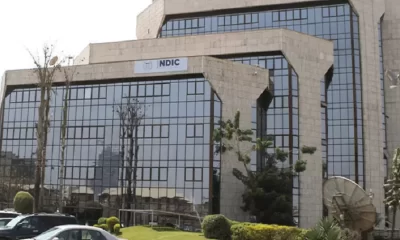
 Business1 week ago
Business1 week agoNDIC begins liquidation of ASO Savings, Union Homes, moves to pay insured deposits

 Latest1 week ago
Latest1 week agoAkpabio denies health scare, dismisses reports of collapse on London trip
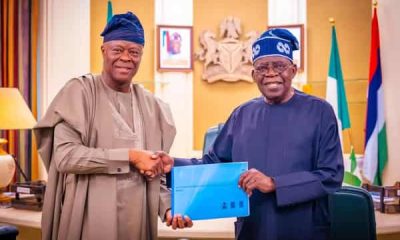
 Business4 days ago
Business4 days agoPresident Tinubu, Minister Wale Edun and Nigeria’s Fiscal Profile: The Truth and the Lies
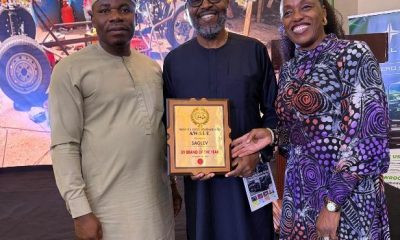
 Business4 days ago
Business4 days agoSAGLEV clinches 2025 Nigeria EV Brand of the Year Award
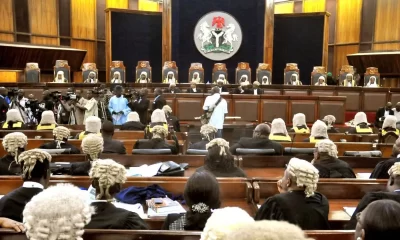
 Latest1 week ago
Latest1 week agoIHRC cautions against abuse of emergency powers after Supreme Court ruling

